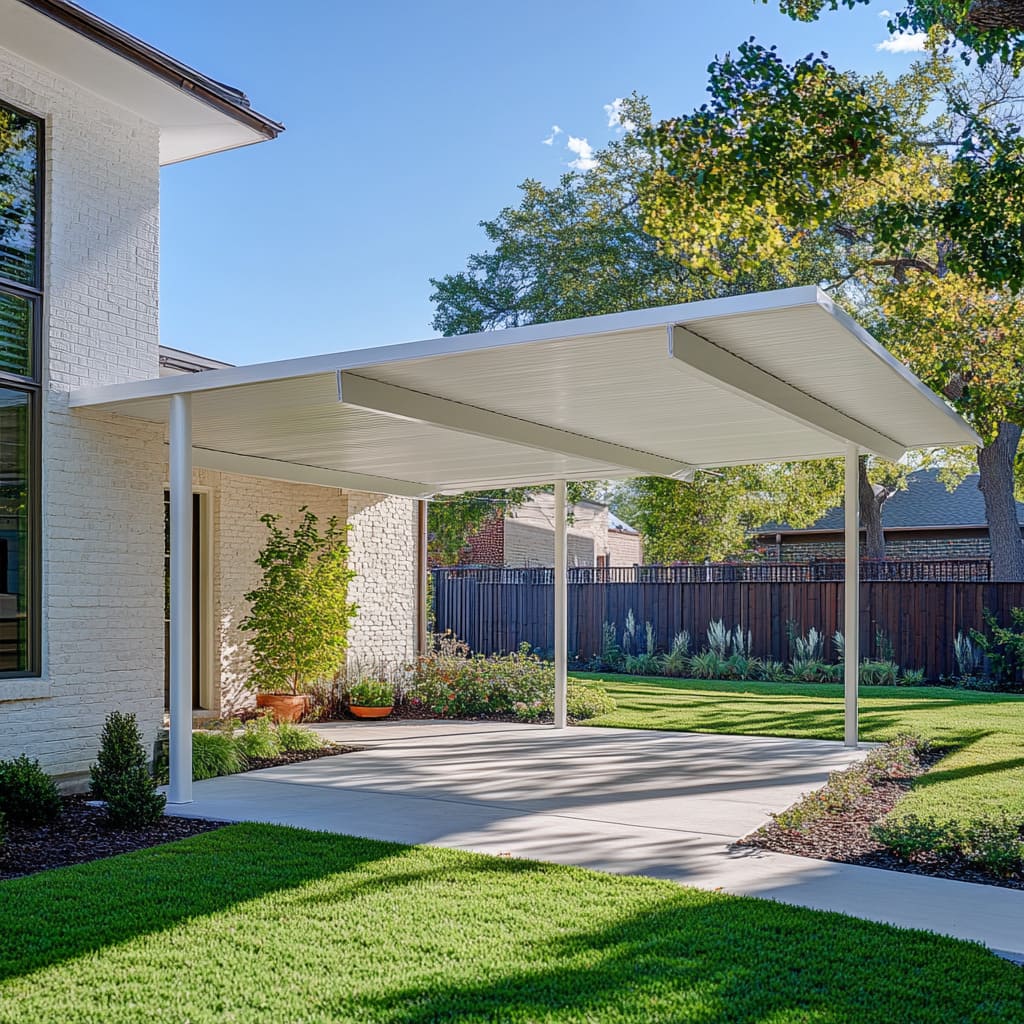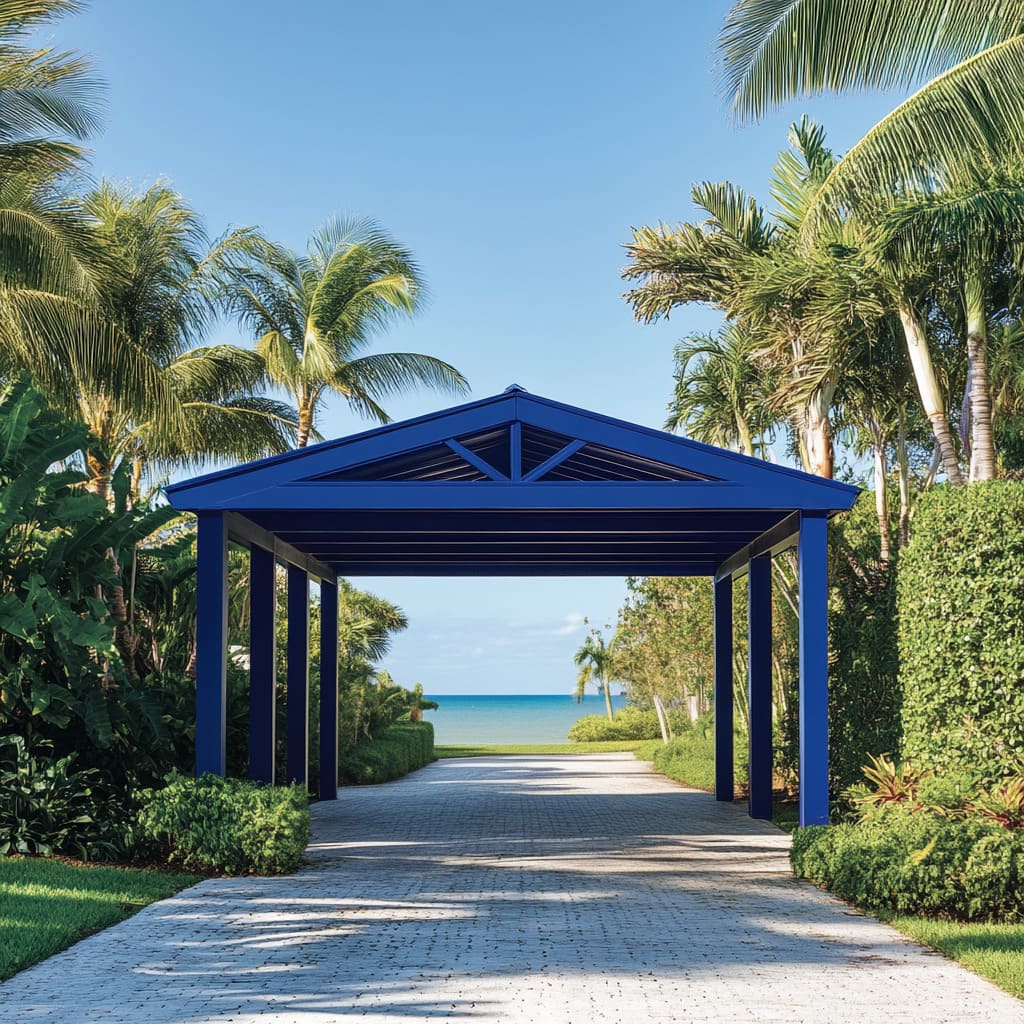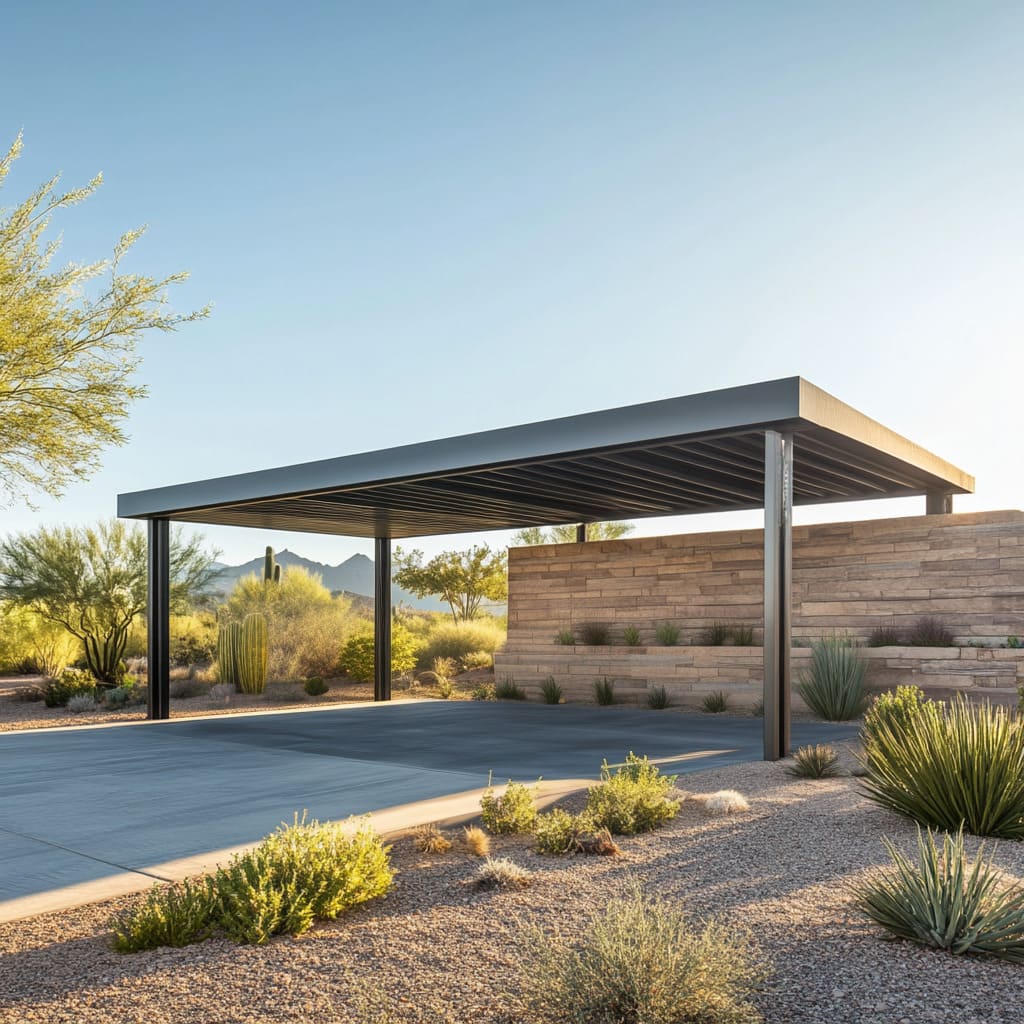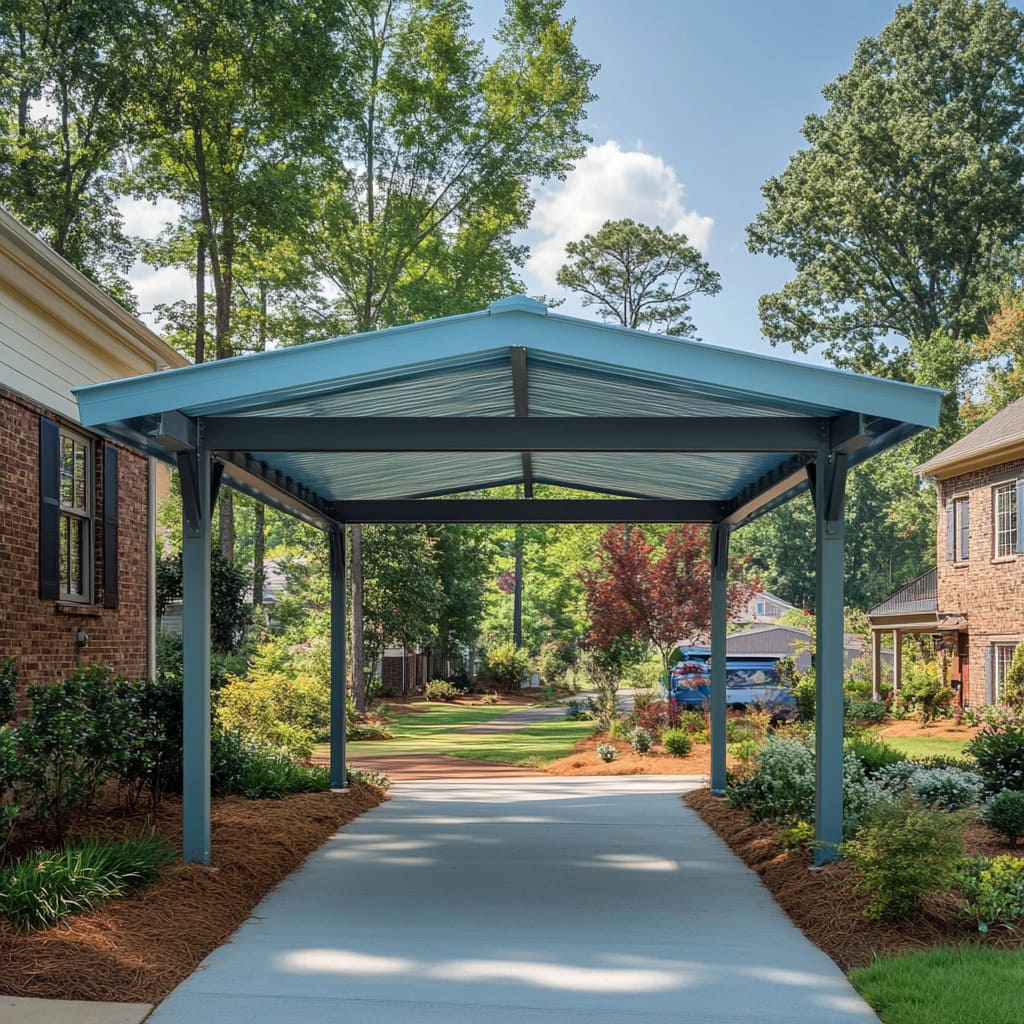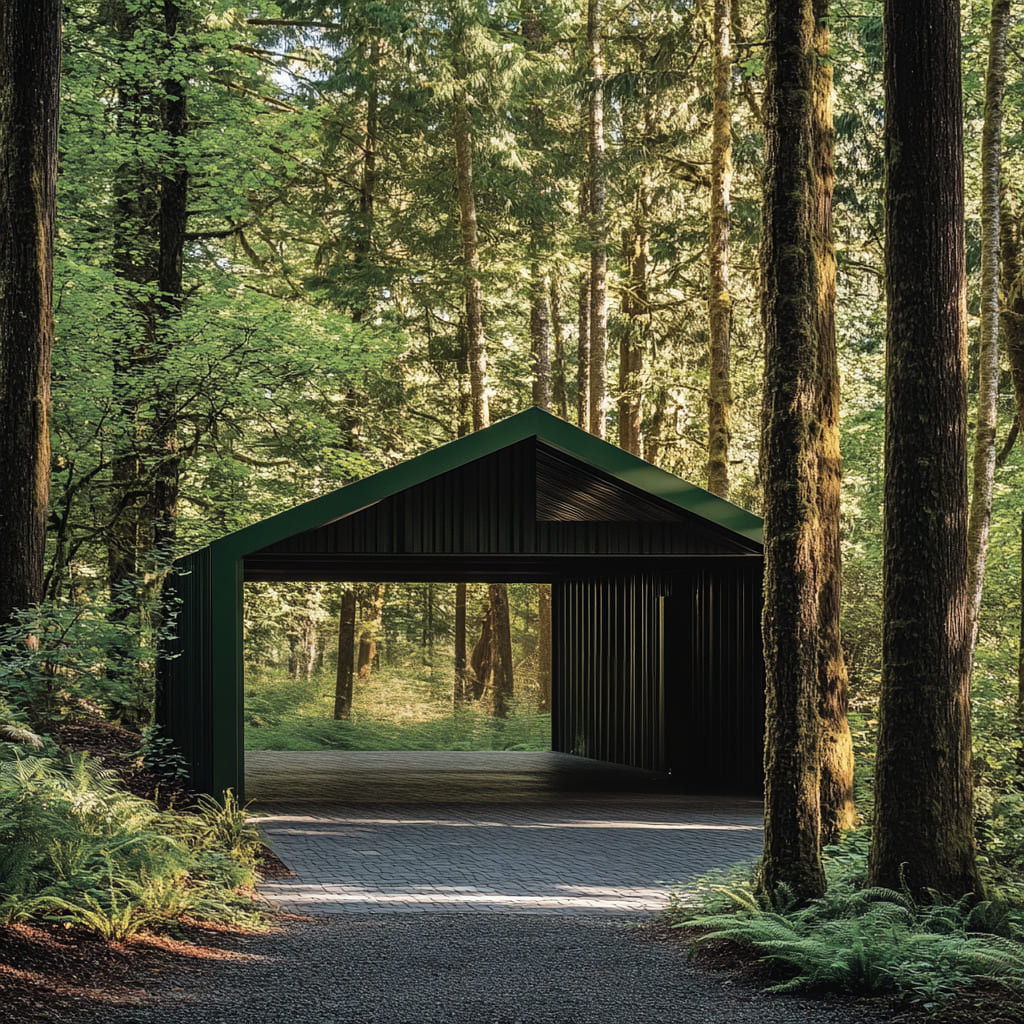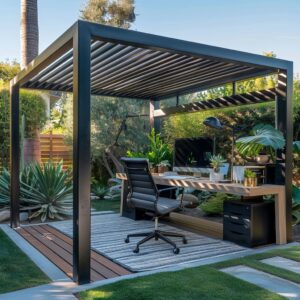Investing in a carport comes with many benefits. A metal carport offers vital protection for your vehicles, saves you time and money, and can enhance the value of your property.
Whether you’re opting for a steel carport as an alternative to a conventional garage or need additional covered space to protect your possessions from the weather, this guide will help you find the perfect carport for your requirements
Eight Essential Factors To Consider Before Buying a Metal Carport
When buying a metal carport, it’s crucial to thoroughly assess several essential factors to ensure that it effectively meets your needs and offers good value. Here’s an expanded look at the key considerations to keep in mind:
Purpose and Usage
- Intended Use: Clearly define the primary purpose of the carport. Are you looking to protect vehicles, provide additional storage space, create a shaded area for outdoor gatherings, or all of the above? The intended use will significantly influence the carport’s size, design, and features. For instance, if the carport is for vehicle protection, you must consider weather resistance and height clearance. Additional features like side panels or integrated shelving might be vital for storage or recreational use.
- Capacity: Evaluate how many vehicles or items you plan to shelter. Carports come in various configurations, including single-vehicle, double-vehicle, and even multi-vehicle options. Assess the dimensions required to comfortably fit your vehicles or equipment and consider any future needs for additional space. A well-sized carport will accommodate your current needs and allow for potential expansion.
Size and Dimensions
- Dimensions: Thoroughly measure the installation area, including width, length, and height. Ensure that the carport you choose fits within these dimensions, allowing easy access and movement around the structure. Accurate measurements are crucial to prevent installation issues and ensure the carport effectively serves its intended purpose.
- Height Clearance: Verify the height of the carport to ensure it meets the needs of any tall vehicles or equipment you plan to store. If you own an RV, boat, or truck, ensure the carport provides ample vertical clearance. Insufficient height can lead to difficulties with parking and potential damage to your vehicle.
Material Quality
- Metal Type: Choose the correct type of metal based on your specific needs and environmental conditions. Galvanized steel is renowned for its strength, durability, and resistance to rust and corrosion, making it a good choice for areas with harsh weather conditions. On the other hand, aluminum is lighter and offers excellent resistance to corrosion but may not be as robust as steel. Consider the benefits and limitations of each material to ensure you select the most suitable option.
- Coatings and Finishes: Look for metal carports with protective coatings or finishes. These can include rust-resistant coatings, UV-protective layers, and paint finishes that enhance durability and maintain the carport’s appearance. A high-quality finish not only extends the carport’s lifespan but also reduces the frequency of maintenance and cleaning.
Design and Style
- Structural Design: Metal carports are available in various designs, such as open-sided, partially enclosed, or fully enclosed structures. Choose a design that matches your functional requirements and aesthetic preferences. For example, an open-sided carport provides easy access and ventilation. In contrast, an enclosed carport offers additional protection from the elements and can be used for various purposes.
- Roof Style: The roof style can impact the carport’s visual appeal and functionality. Options include gabled, peaked, or flat roofs. A gabled or peaked roof allows for better water runoff and snow shedding, which can benefit areas with heavy precipitation. A flat roof might suit regions with minimal rainfall and offer a modern, sleek appearance.
Local Building Codes and Permits
- Building Codes: Research and understand local building codes and zoning regulations that may affect your carport installation. These regulations ensure the carport meets safety and structural standards, including height restrictions, distance from property lines, and load-bearing requirements. Compliance with these codes is necessary to avoid fines and ensure the structure is safe and legally approved.
- Permits: Obtain the necessary permits before beginning installation. This process involves submitting plans and specifications to local authorities for approval. Securing permits helps you adhere to local regulations and provides peace of mind that your carport is built to standard.
Foundation and Site Preparation
- Foundation Type: Determine the appropriate foundation for your carport based on soil conditions and intended use. Standard options include concrete slabs, which offer a solid and level base; gravel bases, which are more accessible and more cost-effective to install; or anchor piers for stability without a full foundation. A proper foundation is essential for the structural integrity and longevity of the carport.
- Site Preparation: Preparing the site is proactive, ensuring your carport is installed correctly and stable. Ensure the site is level and free of debris. Site preparation may involve clearing vegetation, leveling the ground, and making necessary adjustments. This proactive approach helps avoid issues such as uneven settling or drainage problems, making you feel responsible and in control of the installation process.
Budget and Costs
- Initial Cost: Establish a clear budget that includes all costs associated with purchasing and installing the carport. This factor includes materials, labor, additional features or customizations, and potential permit fees. Getting detailed quotes from multiple suppliers can help you compare prices and find the best deal within your budget.
- Long-Term Costs: Consider the long-term costs of maintaining the carport. While high-quality materials and construction may have a higher upfront cost, they can result in lower maintenance and repair expenses over time. Assess potential costs for maintenance, repairs, and energy efficiency to make an informed decision about the total cost of ownership.
Supplier and Manufacturer
- Reputation and Reviews: Research potential suppliers and manufacturers to ensure they have a solid reputation for quality and customer service. Look for customer reviews, ratings, and testimonials to gauge their reliability and satisfaction. A reputable supplier is more likely to provide a high-quality product and support throughout purchasing.
- Warranty and Support: Examine the manufacturer’s warranty and support options. A comprehensive warranty offers protection against defects and issues that may arise with the carport. Reliable customer support is also essential for addressing any concerns or problems that may occur during or after installation.

